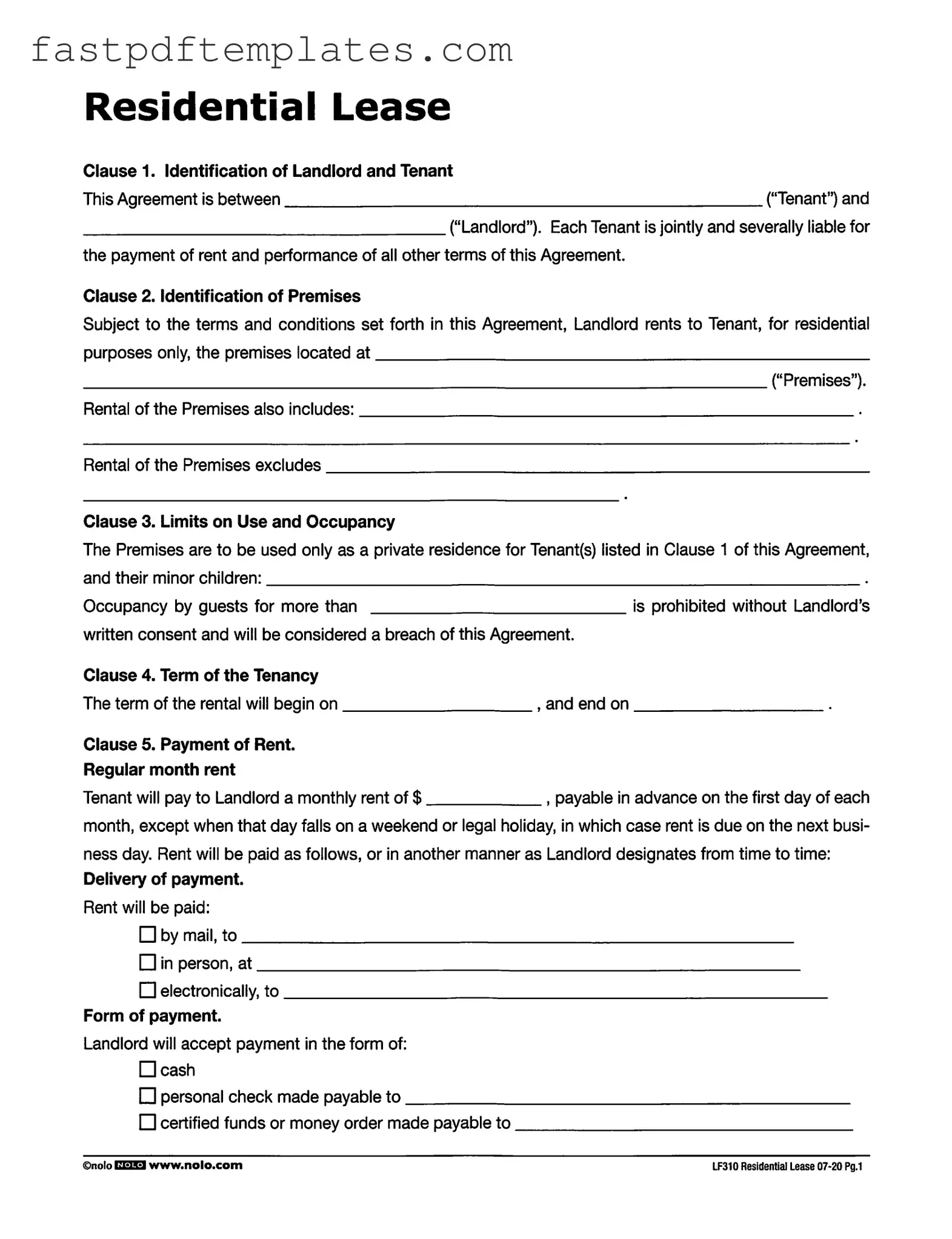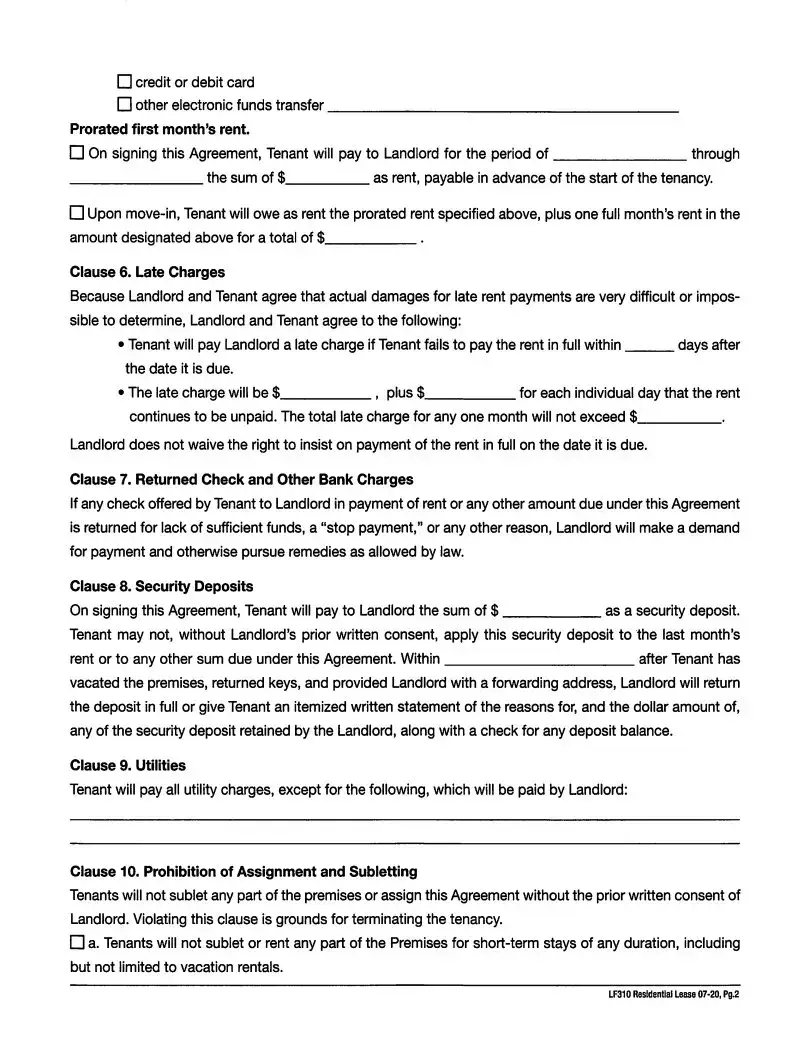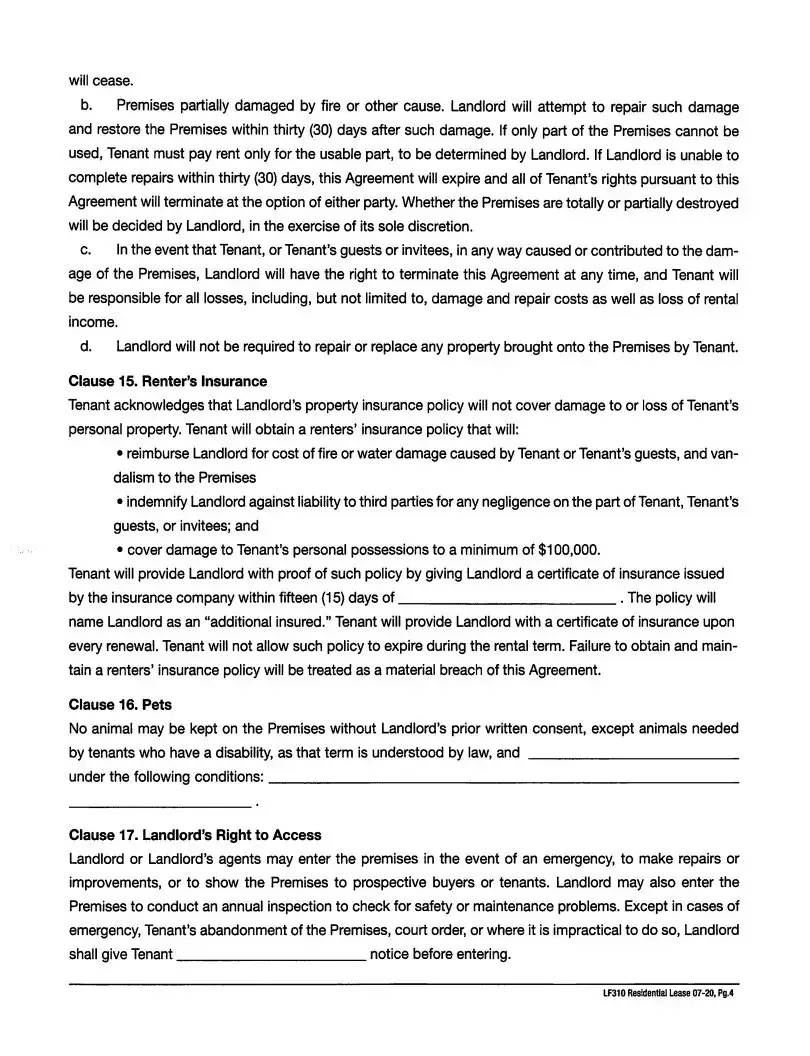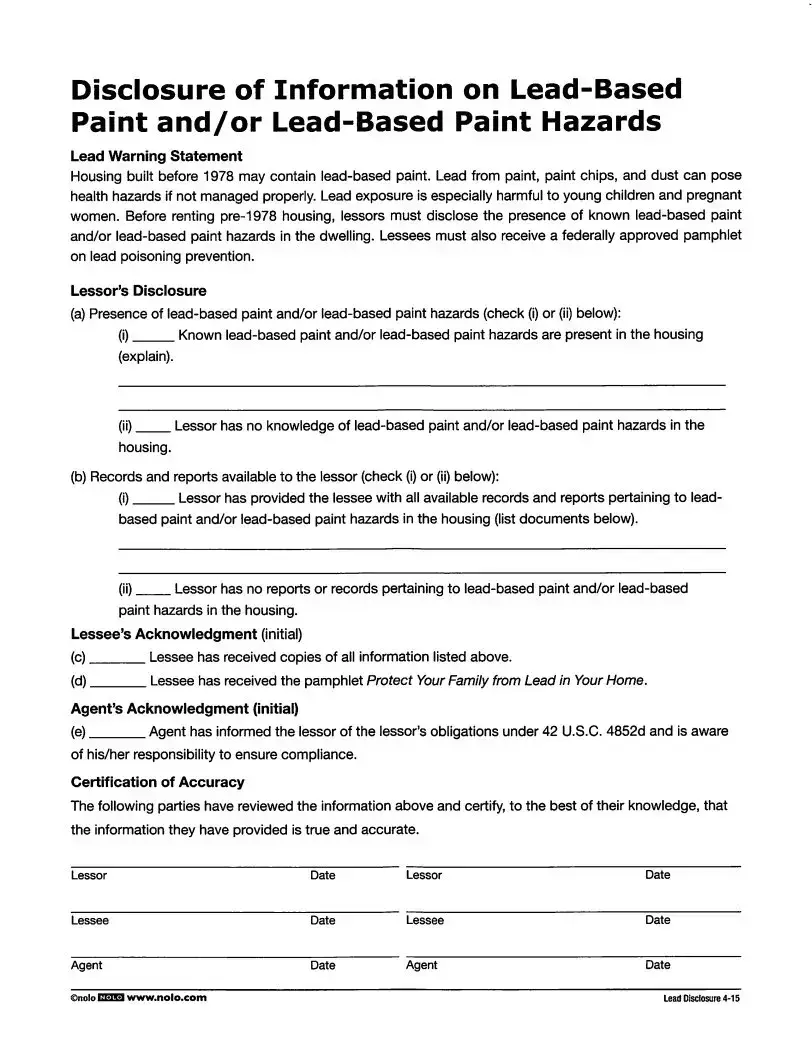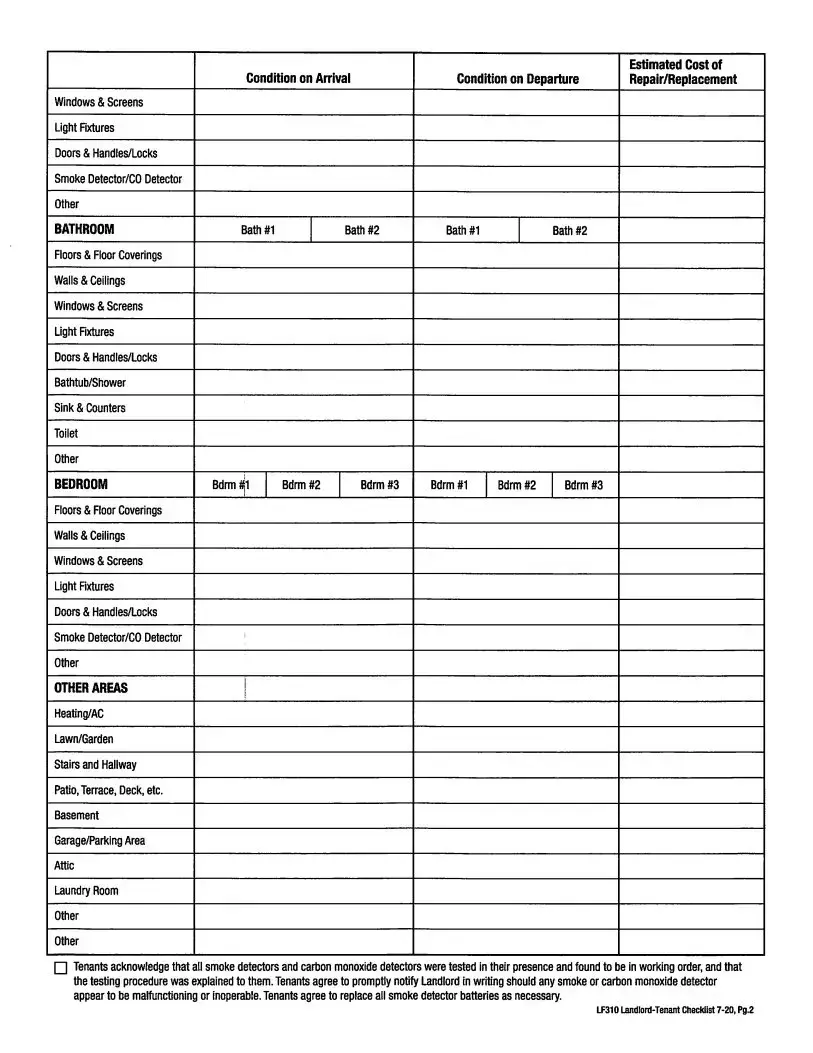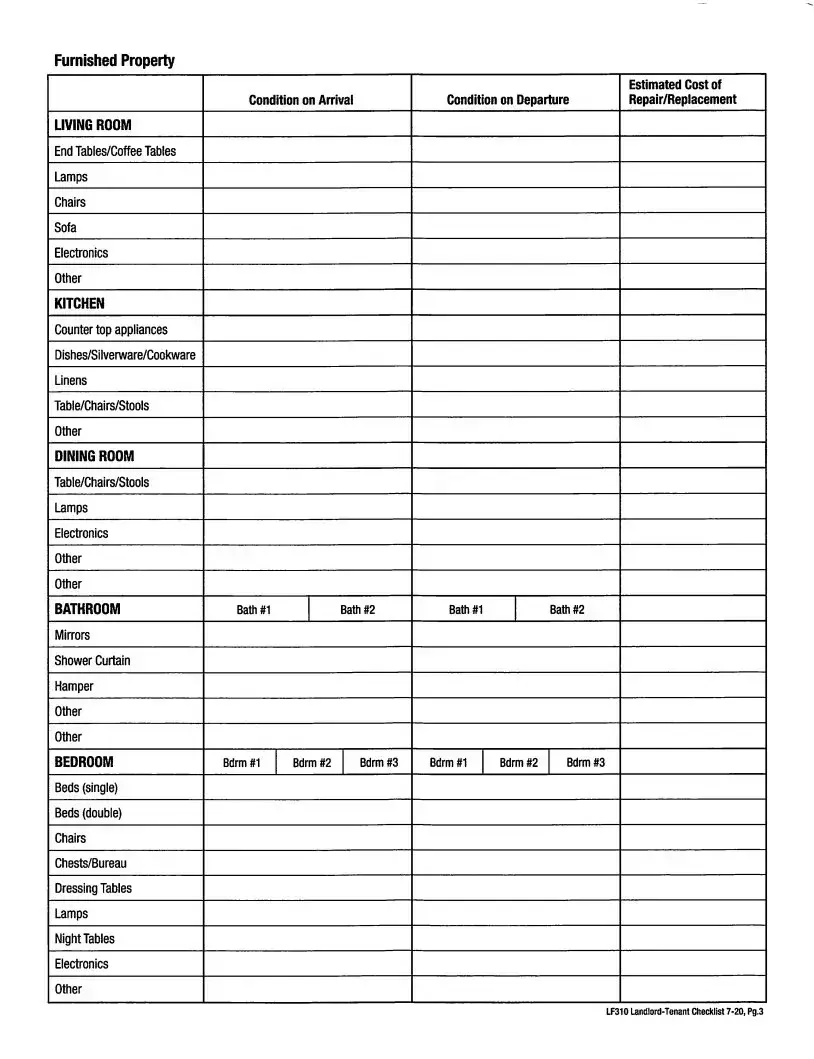The LF310 Residential Lease form is similar to the standard Residential Lease Agreement. Both documents outline the responsibilities of the landlord and tenant, including the payment of rent and the use of the premises. They typically include clauses about the identification of parties, term length, and rules regarding security deposits. Both forms also specify the consequences of late payments and the process for handling returned checks, ensuring clarity and protection for both parties involved.
Another document that shares similarities is the Month-to-Month Rental Agreement. Like the LF310 form, this agreement allows for residential occupancy and includes terms regarding rent payment and property use. However, the Month-to-Month agreement provides more flexibility, allowing tenants to terminate the lease with shorter notice. Both documents emphasize the importance of adhering to agreed-upon terms to maintain a positive landlord-tenant relationship.
The Lease Agreement for Commercial Property is also comparable. While primarily designed for business use, it includes similar clauses about rent payment, security deposits, and limits on use. Both agreements serve to protect the interests of the property owner while establishing clear expectations for the tenant. The main difference lies in the intended use of the property, with the commercial lease focusing on business activities rather than residential living.
The Sublease Agreement is another document that resembles the LF310 Residential Lease. It allows a tenant to rent out their space to another individual, but it requires the original landlord's consent. Like the LF310 form, it outlines responsibilities, payment terms, and consequences for violating the agreement. Both documents aim to maintain order and clarity in the rental arrangement, ensuring that all parties understand their rights and obligations.
The Rental Application is also similar in that it is often used in conjunction with lease agreements. This document gathers essential information about potential tenants, such as employment history and creditworthiness. While it does not outline the terms of the lease itself, it plays a crucial role in the selection process, ensuring that landlords can make informed decisions about who they allow to occupy their property.
The Lease Addendum is another relevant document. It serves as an addition to the original lease and can modify or clarify specific terms, such as pet policies or maintenance responsibilities. Similar to the LF310 form, it requires mutual agreement between the landlord and tenant. This document ensures that any changes are documented and agreed upon, providing further protection and clarity for both parties.
The Property Management Agreement shares similarities as well. This document outlines the relationship between the landlord and a property management company, detailing responsibilities for rent collection, maintenance, and tenant relations. Like the LF310 form, it establishes clear expectations and duties, ensuring that property management operates smoothly and effectively on behalf of the landlord.
The Eviction Notice is another document that can be related to the LF310 Residential Lease. While it serves a different purpose, it is often a result of violations of the lease terms. Both documents emphasize the importance of adhering to the agreed-upon rules and conditions. The Eviction Notice provides a formal way to address breaches, ensuring that the process follows legal guidelines to protect the rights of both landlords and tenants.
Finally, the Move-In Checklist is similar in that it documents the condition of the premises at the start of the tenancy. This checklist helps to prevent disputes regarding security deposits and property condition upon move-out. Like the LF310 form, it emphasizes the importance of clear communication and understanding between the landlord and tenant, fostering a positive rental experience.
